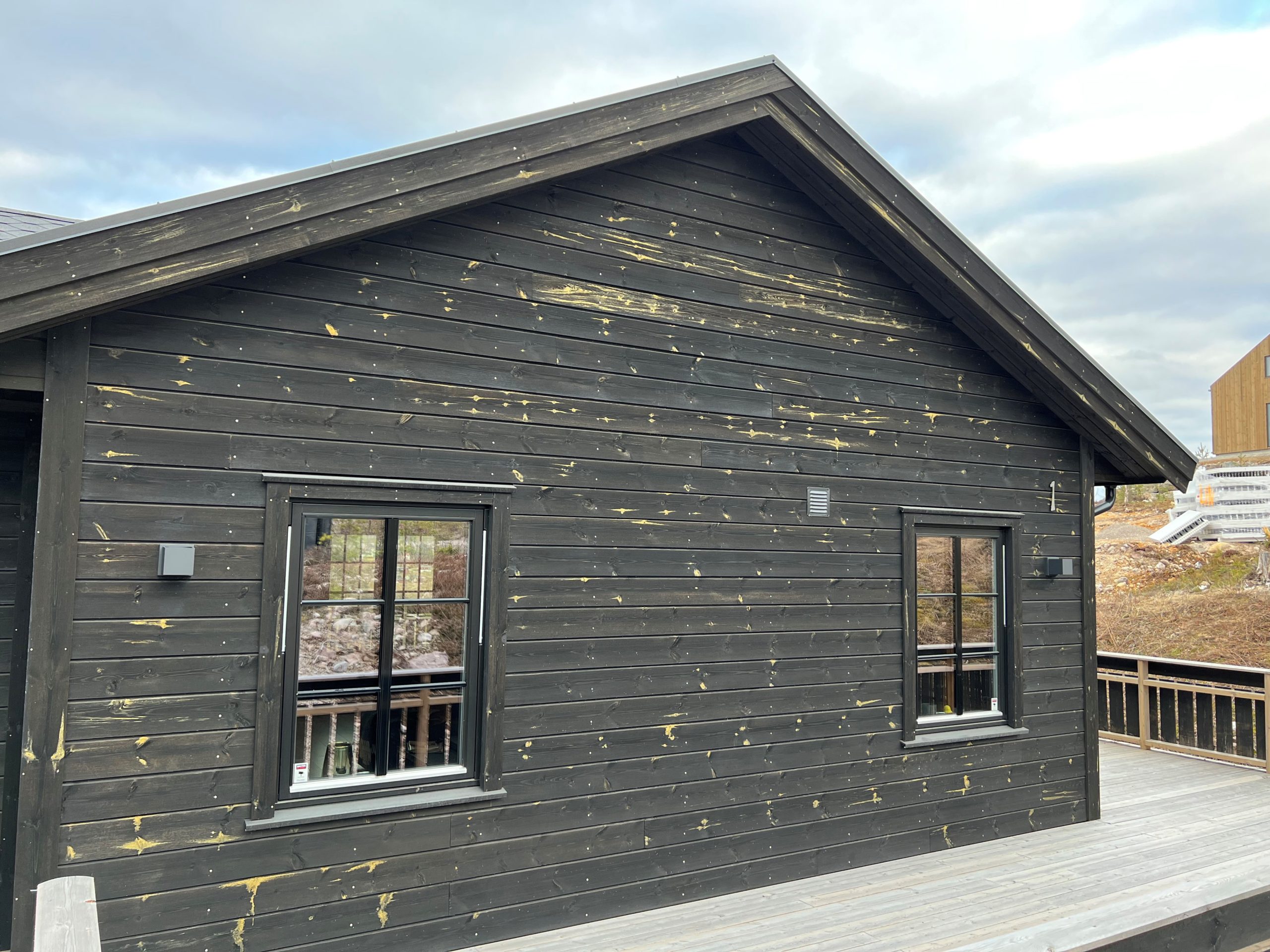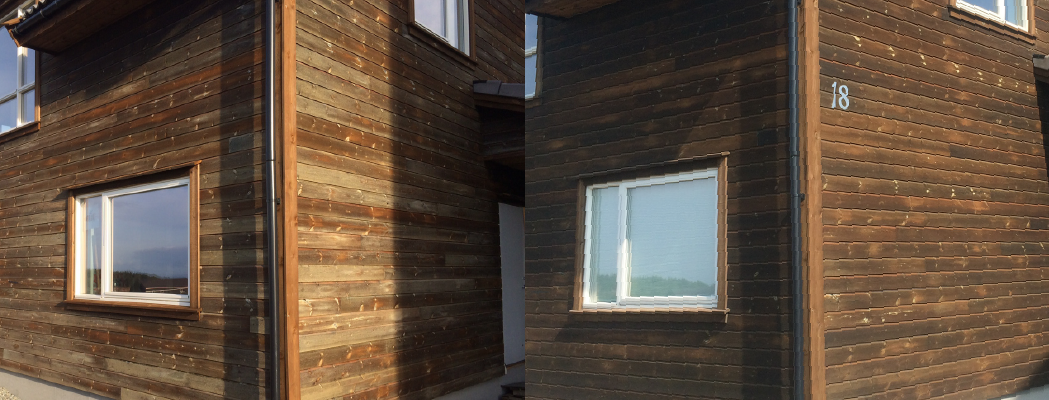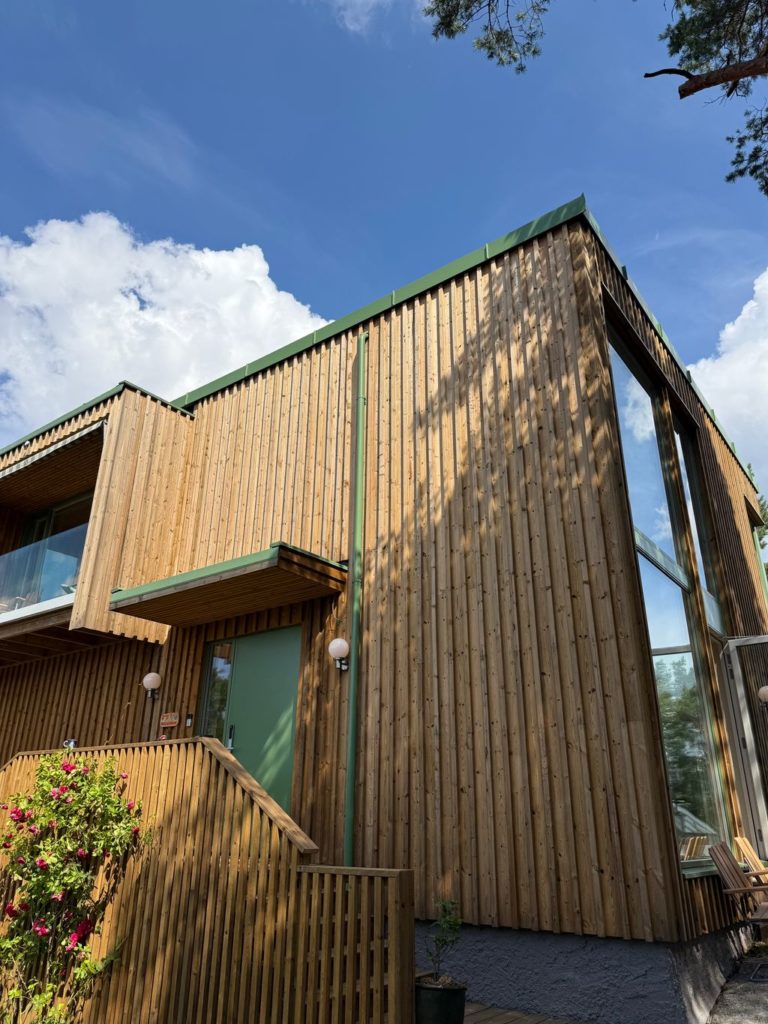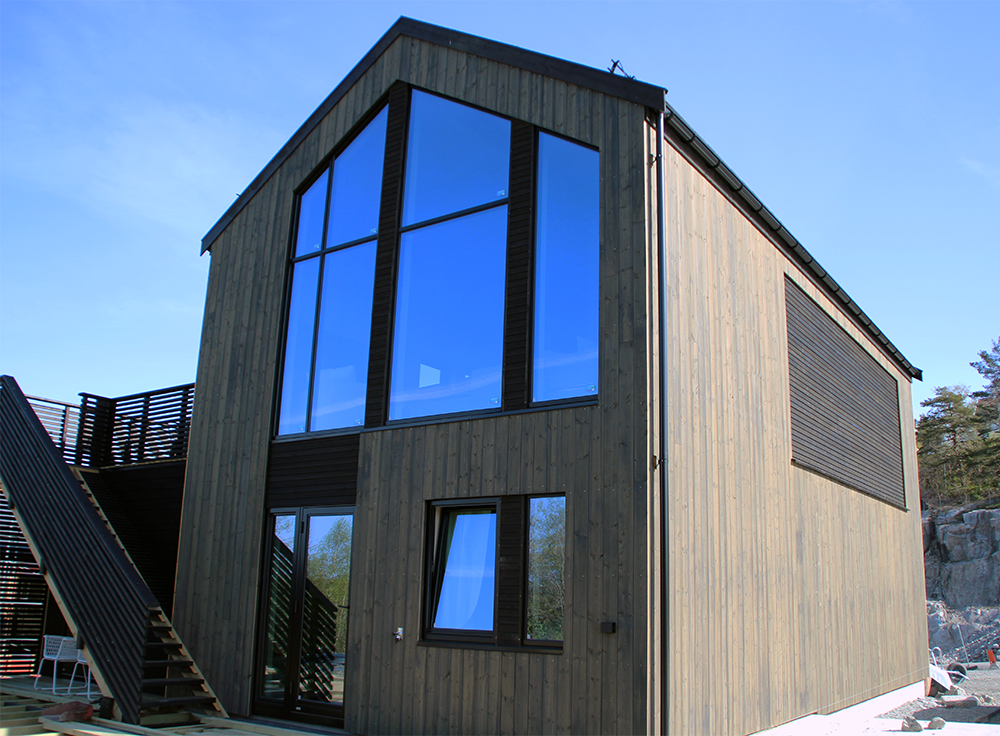- Articles
- Kvae/resin - what is this?
Kvae/resin - what is this?
Kvae and resin rash
A natural part of the wood
Kvae is found naturally in pine, but in varying amounts. Kvae is traditionally considered an asset because the resin has a preservative effect on the wood. The content of kvae in pine can vary considerably, from 2% all the way up to 40%. Even though we boil out a lot of the sap through the royal process, it is not always possible to boil out everything.
White and yellow spots
On installed Royal-impregnated cladding or decking, it is sometimes possible to see some of the remaining resin coming out of the wood. This can be seen as a white or greyish film, especially around twigs and on the edges. Areas where the lumber is exposed to a lot of sunlight are particularly vulnerable. A warm surface will normally secrete more kvae than a cold surface. Dark colours also have a higher heat absorption than light colours, and will therefore be most susceptible to further boiling out of kvae. It is difficult to say how much resin is released from the wood and how long this persists. It depends on how much is already present in the wood and the temperature conditions.
How to remove kvae and resin
How to treat quince/resin rash
Normally, nature itself will ensure that this is removed by weather and wind. Observations show that this normally takes one year if the wood is left alone. Resin rash is normal and does not entitle you to make a complaint. The rash will usually disappear on its own over time.
If you want to speed up the process, you can use a stiff-bristled broom (not a wire brush) to scrape or brush away the mould. Then wash the surface to remove any remaining dust. This can be adapted to annual washing, and if desired, the areas with a lot of kvae can be re-polished. It should be noted that re-oiling may result in new mould deposits if the wood is not fully "softened".
Before and after treatment for chaff/resin
Below are two images of the same wall. Here one has followed the product's SDR in relation to any measures that can be taken for resin/cake growth. We would like to point out that there is no guarantee that chaff/resin will reappear despite the treatment that has been carried out.




